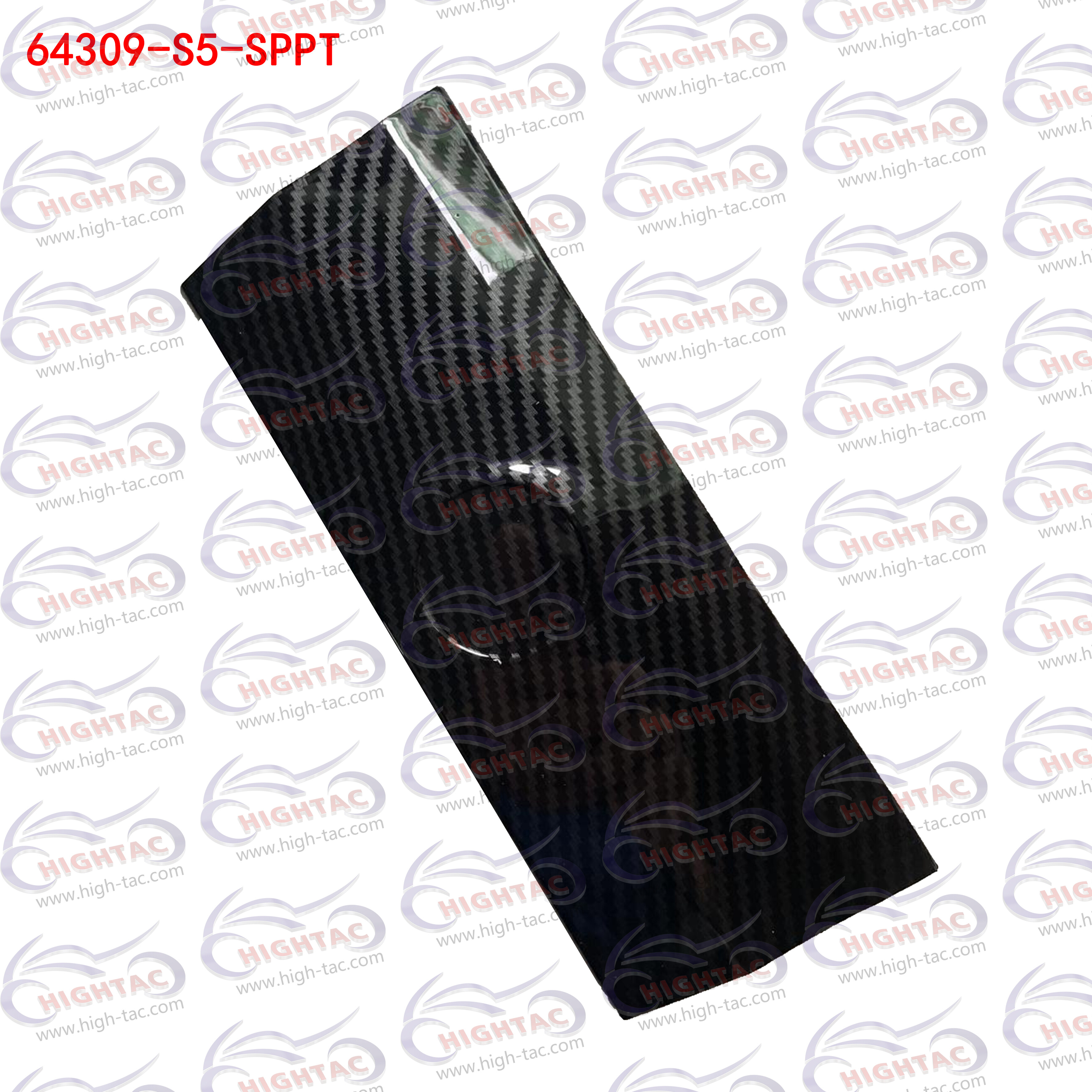How to Make Carbon Fiber Motorcycle Parts: A Comprehensive Guide
Carbon fiber motorcycle parts have become increasingly popular due to their lightweight, strength, and aesthetic appeal. Whether you're looking to improve your bike's performance or simply want to give it a custom look, making your own carbon fiber parts can be a rewarding experience. This guide will walk you through the process of how to make carbon fiber motorcycle parts, providing detailed steps, tips, and insights to help you achieve professional results.
What is Carbon Fiber?
Understanding the Material
Carbon fiber is a composite material made of thin, strong crystalline filaments of carbon. It is known for its exceptional strength-to-weight ratio, making it a preferred choice in the automotive, aerospace, and sports industries. When used in motorcycle parts, carbon fiber offers reduced weight, enhanced durability, and a sleek, modern appearance.
Why Use Carbon Fiber for Motorcycle Parts?
The primary advantage of carbon fiber is its light weight, which translates to improved speed and handling in motorcycles. Additionally, carbon fiber parts are resistant to corrosion, temperature extremes, and UV rays, ensuring longevity. This makes it an ideal material for various motorcycle components, such as fairings, fenders, and exhaust systems.
Tools and Materials You Will Need
Before diving into the process of how to make carbon fiber motorcycle parts, it's essential to gather the necessary tools and materials. Here's a list of what you'll need:
- Carbon Fiber Fabric: The primary material used to create the parts.
- Epoxy Resin: Used to bind the carbon fiber layers together.
- Release Agent: Prevents the resin from sticking to the mold.
- Vacuum Bagging Materials: Ensures a smooth, void-free finish by removing air pockets.
- Molds: Used to shape the carbon fiber into the desired motorcycle parts.
- Cutting Tools: Sharp scissors or a rotary cutter to cut the carbon fiber fabric.
- Brushes and Rollers: For applying the epoxy resin evenly.
- Protective Gear: Gloves, masks, and safety glasses to protect yourself from chemicals and fibers.
Step-by-Step Process of Making Carbon Fiber Motorcycle Parts
1. Designing and Creating the Mold
The first step in making carbon fiber motorcycle parts is designing the mold. The mold determines the final shape and dimensions of the part. You can either create your own mold using materials like foam or purchase pre-made molds specific to motorcycle parts.
- Design the Part: Use CAD software or sketch out your design on paper.
- Create the Mold: If making your own, carve the shape out of foam or other suitable materials.
- Prepare the Mold: Apply a release agent to the mold to ensure easy removal of the finished part.
2. Cutting the Carbon Fiber Fabric
Once your mold is ready, it's time to cut the carbon fiber fabric. Precision is crucial in this step, as the fabric must fit perfectly over the mold.
- Measure and Mark: Lay the fabric flat and measure the dimensions based on your mold.
- Cut the Fabric: Use sharp scissors or a rotary cutter to cut the fabric according to your measurements.
3. Applying the Epoxy Resin
The next step in the process of how to make carbon fiber motorcycle parts involves applying epoxy resin. This resin binds the carbon fiber layers together and gives the part its strength.
- Mix the Resin: Follow the manufacturer's instructions to mix the epoxy resin and hardener.
- Apply the Resin: Use a brush or roller to apply a thin layer of resin to the mold.
- Lay the Fabric: Carefully place the carbon fiber fabric onto the resin-coated mold.
- Apply More Resin: Once the fabric is in place, apply another layer of resin on top, ensuring it saturates the fabric.
4. Layering and Vacuum Bagging
For added strength, you may need to apply multiple layers of carbon fiber fabric. Each layer should be applied in the same manner, with resin applied between each one.
- Add More Layers: Depending on the desired thickness, add additional layers of carbon fiber fabric.
- Vacuum Bagging: Place the mold and fabric into a vacuum bag. This process removes air pockets, ensuring a smooth, high-quality finish.
- Cure the Part: Allow the part to cure according to the resin manufacturer's instructions. This usually involves letting it sit for several hours or overnight.
5. Trimming and Finishing
Once the part has fully cured, it's time to remove it from the mold and perform any necessary finishing work.
- Remove from Mold: Carefully take the part out of the mold, using tools if necessary to ease the process.
- Trim Excess Material: Use a Dremel tool or similar device to trim off any excess carbon fiber, ensuring the edges are smooth.
- Sanding and Polishing: Sand the surface of the part to achieve a smooth finish, then polish it to enhance its appearance.
6. Painting and Installing the Parts
The final step in how to make carbon fiber motorcycle parts is painting (if desired) and installing them on your motorcycle.
- Painting: If you want to add a custom color or design, use automotive-grade paint suitable for carbon fiber.
- Install the Parts: Once the paint is dry, install the parts on your motorcycle, ensuring all bolts and fittings are securely tightened.
Tips for Success
Practice Makes Perfect
If you're new to working with carbon fiber, consider practicing on smaller, less complex parts before tackling larger projects. This will give you a better feel for the material and the process.
Safety First
Always wear protective gear when working with carbon fiber and epoxy resin. The fibers can irritate the skin and lungs, while the resin can be harmful if inhaled or if it comes into contact with the skin.
Attention to Detail
Take your time with each step of the process, especially when cutting the fabric and applying the resin. Attention to detail will result in a more professional-looking finished product.
Common Mistakes to Avoid
Inadequate Mold Preparation
Failing to properly prepare the mold can result in the carbon fiber part sticking to it, making removal difficult and potentially damaging the part. Always use a release agent.
Air Pockets
Air pockets can weaken the structure of the carbon fiber part and lead to a rough surface finish. Vacuum bagging is essential to remove these air pockets and ensure a smooth, strong part.
Incorrect Resin Mixing
Mixing the epoxy resin incorrectly can lead to improper curing, resulting in a part that is either too brittle or too flexible. Follow the manufacturer's instructions carefully.
Applications of Carbon Fiber Motorcycle Parts
Carbon fiber can be used to create a wide range of motorcycle parts, each offering unique benefits. Here are some popular applications:
Fairings
Carbon fiber fairings are lighter and more durable than traditional plastic fairings. They reduce the overall weight of the bike, improving speed and handling.
Fenders
Carbon fiber fenders are not only functional but also add a sleek, modern look to your motorcycle. They are resistant to chips and cracks, ensuring long-lasting performance.
Exhaust Systems
A carbon fiber exhaust system is a popular upgrade for performance-oriented riders. It reduces weight, enhances sound, and provides a distinctive appearance.
Tank Covers
Carbon fiber tank covers protect your motorcycle's fuel tank from scratches and dings while adding a custom look.
Conclusion
Learning how to make carbon fiber motorcycle parts can be a highly rewarding endeavor, offering both performance enhancements and aesthetic upgrades for your bike. By following the steps outlined in this guide and paying close attention to detail, you can create high-quality, professional-looking parts that will stand the test of time.
Whether you're a seasoned DIY enthusiast or a motorcycle novice, making your own carbon fiber parts is an achievable goal. With practice and patience, you'll be able to customize your motorcycle to your exact specifications, enjoying the benefits of lightweight, durable, and stylish components.



